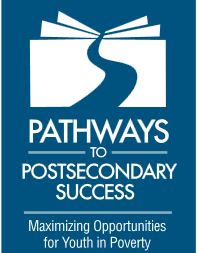
By Makeba Jones. In the wake of the Great Recession, unemployment and poverty rates among young adults have dramatically increased, especially for those who have not earned bachelor’s degrees (Aud, KewalRamani, & Frohlich, 2011). College attendance and completion are critical for individuals seeking stable employment and economic mobility out of poverty. We know that the institutions at the end of the pipeline—colleges and universities—need to improve graduation rates for students who have grown up in poverty (Johnson & Rochkind, 2010a). As important, students who are earlier in the pipeline—i.e., in high school—need to be prepared for college-level work and expectations (Lee & Smith, 2001). For low-income youth, the transition from high school to college is a pivotal juncture; clearing the college-going hurdle immediately, without delay, increases the likelihood that they will earn four-year degrees (Ashtiani & Feliciano, 2012; Bozick & DeLuca, 2005). One of the most important components of preparation for a smooth transition is college advising. High school counselors are arguably as important as teachers in preparing low-income high school students for college. Nationwide, high school counseling is fragmented. Absurdly high student to counselor ratios, counselor knowledge gaps about college requirements, and increasing pulls on counselor time that have nothing to do with advising students have cracked counseling systems in many public schools (Adams, 2010; McDonough, 2005). And, in recent years, slashed education budgets have pushed already fragmented counseling systems to the breaking point. Our nation’s students are painfully aware of how their school counseling programs are failing them. In 2010, Public Agenda publicized troubling survey results from over 600 individuals between the ages of 22 and 30 about their high school guidance systems (Johnson & Rochkind, 2010b). Results showed an overwhelming failing grade; even young adults who had earned four-year degrees rated their school counseling as poor. The fact that the report presented a national portrait of dismal counseling for students from all socioeconomic backgrounds does not diminish the urgency to improve counseling for low-income students in particular.
